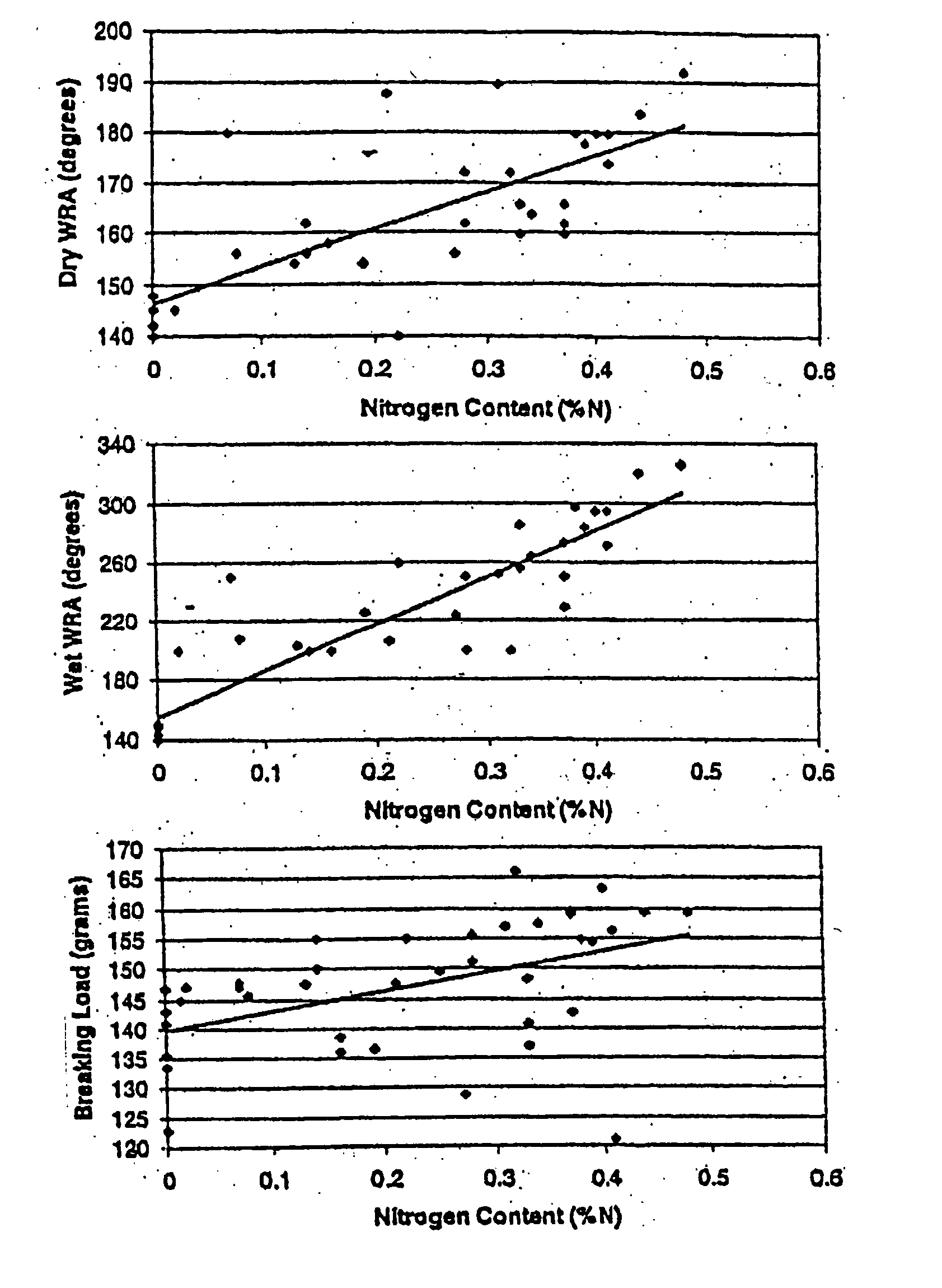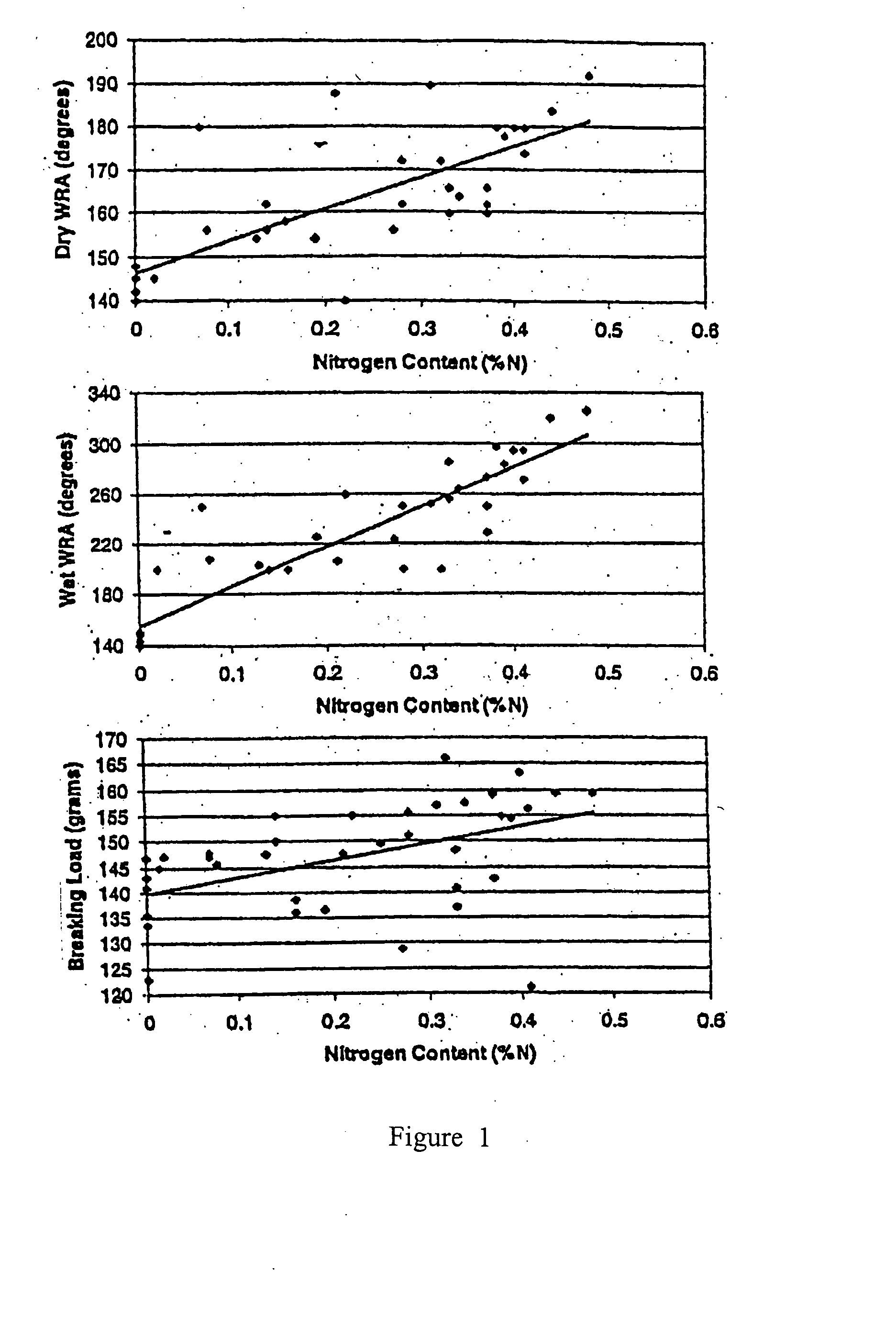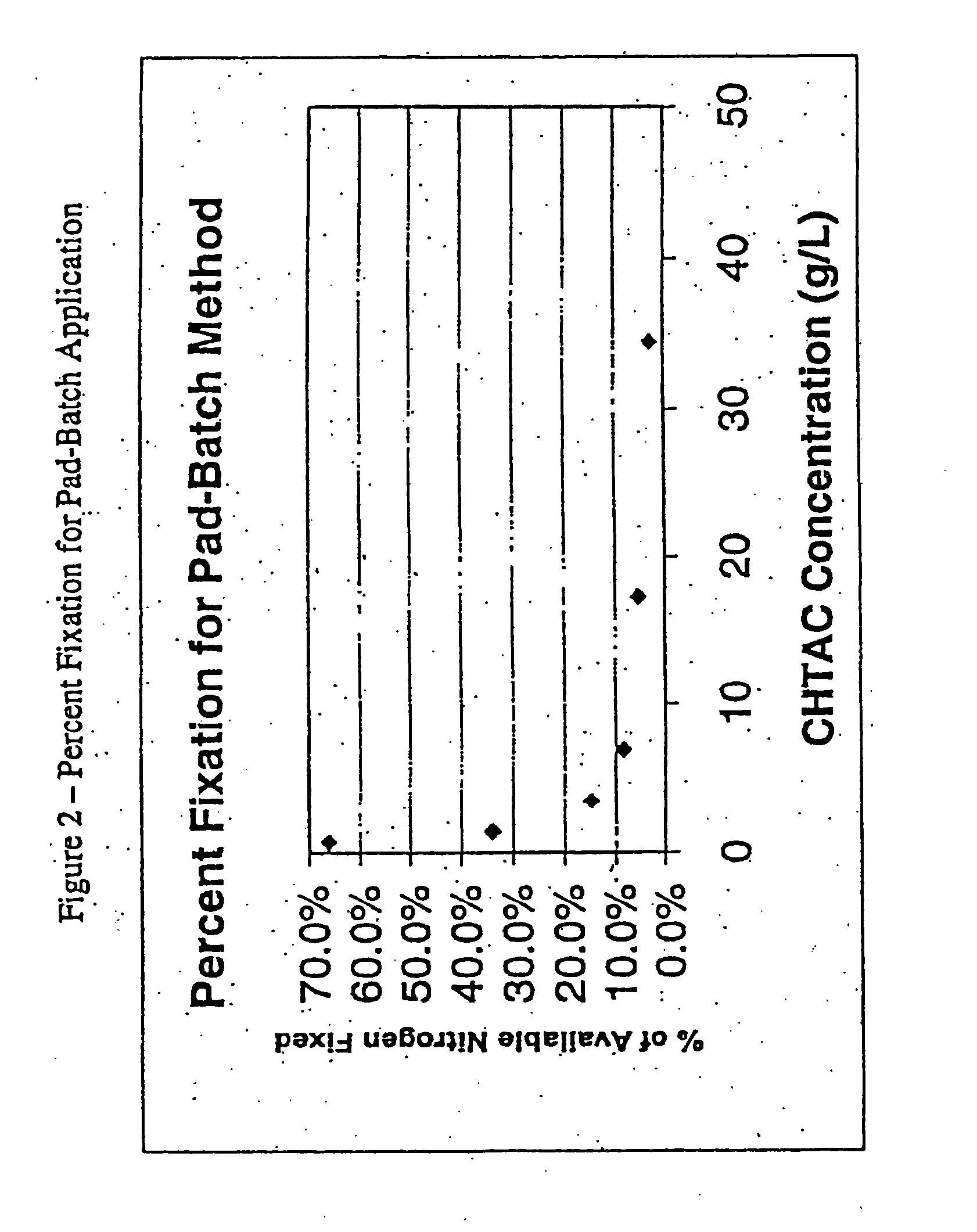Ionic cross-linking of ionic cotton with small molecular weight anionic or cationic molecules
- Summary
- Abstract
- Description
- Claims
- Application Information
AI Technical Summary
Benefits of technology
Problems solved by technology
Method used
Image
Examples
example 1
Cationized Chitosan Treatment of Cellulosic Fabric
[0237] Ionic crosslinked cellulosic fabric was produced in three steps. First, a polycation was synthesized using chitosan and CHTAC. Second, cellulosic fabric was carboxymethylated using CAA, which provided a reactive anion. Finally, the polycation was padded or exhausted on to the pretreated fabric. The degree of carboxymethylation of the cellulose was determined by titration, and the amount of cationized chitosan (CC) sorbed was determined by elemental analysis for nitrogen. Seventy samples were produced with various degrees of carboxymethylation and various pad bath concentrations of CC. Only one level of cationization of chitosan was used.
[0238] Highly cationic chitosan was produced by the reaction of 85% N-deacetylated chitin with CHTAC. 161 g of 85% N-deacetylated chitin was slurried in 1156 g of 69% w / w solution of CHTAC. NaOH (50% w / w) was added dropwise to maintain a pH of 10 to 11. The slurry was stirred overnight, then ...
example 2
Simultaneous and Sequential Pad-Batch Treatments of Cellulosic Fabric
[0245] Forty-three specimens of cellulosic fabric were treated with reactive anionic fabric (e.g., CAA or CMSA) and cationizing agent (e.g., CHTAC). These treatments were performed in two ways—either simultaneously or sequentially. Simultaneous treatment involved padding previously untreated fabric through a solution of CHTAC and the reactive anion in the same bath. Sequential treatment involved making previously untreated fabric anionic, then subsequently treating it with CHTAC. In each case, CHTAC levels of 0, 25, 50, and 100 g / L (of 69% solution) were used. For CAA, the treatment levels were 0, 70.8 g / L (0.75 M), 141.7 g / L (1.5M), and 284.5 g / L (3.0 M). For CMSA, the treatment levels were 0, 10, 30, and 60 g / L.
[0246] Anionic treatments for sequential treatment were carried out by the same process described above in Example 1. Cationic treatments and simultaneous treatments were done by a pad-batch procedure as...
examples 3-6
Processes for Producing Cationic Cellulose
[0253] Approximately 180 cationizing-agent treated cellulose samples were produced by different application and pretreatment processes using pretreatment, pad-batch, pad-steam, exhaust application, pad-dry-cure, and non-aqueous solvents. In each case, parameters of the process, e.g., concentration, time, temperature, additives, and the sequence of events, were varied. In each case, samples were thoroughly washed after treatment to remove unfixed fabric, then analyzed for percent nitrogen content using a Leuco HCN analyzer as an indicator of the amount of CHTAC, the cationizing agent that was used to treat the samples, that reacted with the cellulose.
[0254] For the purposes of the presently disclosed subject matter, reaction efficiency is defined as
E=(amount of CHTAC fixed) / (amount of CHTAC hydrolyzed) (1)
or
E=(mcVcΔt) / (msVsΔt) (2)
wherein mc is the mass of cellulose in the system, Vc is the reaction velocity for CHTAC fixation in th...
PUM
| Property | Measurement | Unit |
|---|---|---|
| Temperature | aaaaa | aaaaa |
| Temperature | aaaaa | aaaaa |
| Temperature | aaaaa | aaaaa |
Abstract
Description
Claims
Application Information
 Login to View More
Login to View More - R&D
- Intellectual Property
- Life Sciences
- Materials
- Tech Scout
- Unparalleled Data Quality
- Higher Quality Content
- 60% Fewer Hallucinations
Browse by: Latest US Patents, China's latest patents, Technical Efficacy Thesaurus, Application Domain, Technology Topic, Popular Technical Reports.
© 2025 PatSnap. All rights reserved.Legal|Privacy policy|Modern Slavery Act Transparency Statement|Sitemap|About US| Contact US: help@patsnap.com



